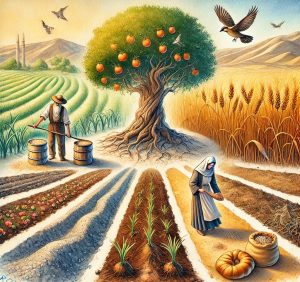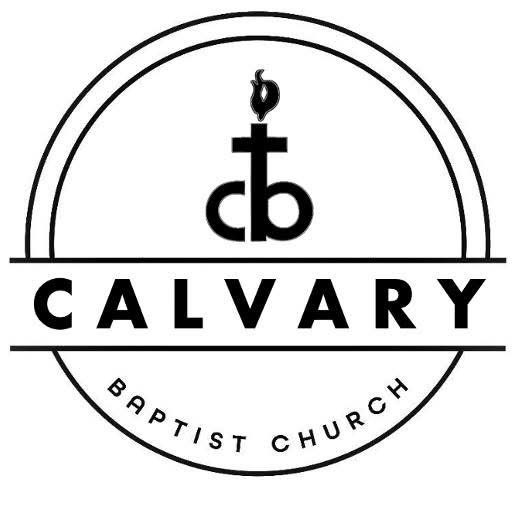
I am only choosing to write on the parables of Matthew chapter 13, as there are many in the four Gospels too numerous to write about at one time. However, there seems to be a theme that connects all seven, which I will explain as I go along.
The first parable is written in two parts, which Jesus Himself explains to His disciples. They ask Him why He is speaking to the crowd in parables. His answer is that they had to be one of His spiritual men to understand the real meaning. However, it includes all true spiritual Christians, but they must apply themselves. For the new Christian, it is called growing in the Word of God.
The people that heard Jesus here were mostly Jews, and Jesus quotes from Isaiah as to why some were not able to understand. Before Jesus explains, He quotes Psalm 78:2: “I will open My mouth in parables, I will utter things kept secret from the foundation of the world.” After this, Jesus explains the meaning of the first parable.
Next, the disciples previously asked Jesus why He spoke in parables, and He quoted from two Old Testament scriptures as an answer. Now I will explain about the sower and the seeds.
I grew up on a farm, and one of my jobs was to sow grass seed on a ten-acre field. I had a 50-pound bag on my back and a long thing we called a horn seeder. As we walked along, we swung the horn, covering the ground. The seed went everywhere.
Jesus said in this first parable, the word of the Kingdom. For us, it is simply the Word of God. All Christians should be preaching the precious gospel of Christ. However, in this parable, it is where the seed lands and what it produces.
The first is seed that falls on the path where everyone walks on to town. The birds of the air eat them. I add one phrase that Satan is the prince of the power of the air (Ephesians 2:2).
The next place the Word of God can land is a stony field with just enough dirt to grow, but not enough for a mature plant. These, not having deep roots, can’t take persecution and trials and soon fall. I don’t say they are not saved, but there is a lack of fruit. These may be helped by being around strong Christians.
The group the Lord describes next is the seed that fell on thorns. This is about people who hear the Word and possibly rejoice for a while. Then things seem to be going well, but their spirituality seems to be choked. Jesus calls this the deceitfulness of riches and the cares of this world. Thus, there is little fruit. These could be saved, yet have very little fruit.
Now the last Jesus tells are the best. These are the ones who bear fruit. Notice these are not all the same. All believing Christians don’t have the same capacity. What are your qualities? What are you doing with what you have?
The Wheat and the Tares
This next parable was spoken previously to the crowd, who did not understand it. Later, Jesus’ disciples called Him aside to ask Him to explain it to them. They had a holy curiosity that the crowd didn’t have. As disciples, we need holy curiosity today too.
Jesus tells of a man planting a field. Then He describes how the man’s enemy comes and plants weeds among the wheat. I’ve been told that this weed was a vicious plant called darnel, which, if eaten, would make cattle very sick. The man’s servants asked if they should pull out the weeds, but he told them no, because doing so would also uproot the wheat. He instructed them to let both grow together until the harvest, when the weeds would be gathered, burned, and the wheat stored in the barn.
Later, the disciples asked Jesus to explain the parable. He told them that He is the sower of the good seed. The field is the world, and the good seeds are the sons of the kingdom. The weeds are the children of the wicked one, and the enemy who sowed them is the devil. Jesus said that the harvest is the end of the age, and the reapers are the angels.
This parable ties back to the seed sown in the first parable and continues the theme through the mustard tree, the leaven in the flour, and now the harvest at the end of the age.
The Hidden Treasure
There are two interpretations among preachers about the next parable, the hidden treasure.
The first interpretation is straightforward: when someone hears the gospel, they give up everything to accept Christ. If this is the best interpretation, I personally had nothing to give up but a sinful past, which wasn’t worth anything anyway.
The second interpretation sees Christ as the one who finds the treasure hidden in the field. He gives up all (His heavenly position) to buy the field. As a type, the field represents Old Testament Israel. Christ considered Israel His treasure hidden in the field (the world) and gave up all to redeem her. In John 1:11-12, we find that Christ came to His own, and His own did not receive Him. He left heaven for the cross to buy the treasure, Israel.
The Pearl of Great Price
This parable is similar to the previous one, but instead of treasure, the man is searching for a pearl of great price. When he finds it, he sells all to buy it.
The first interpretation is again about giving up all to follow Christ. As before, I personally had nothing to give up except a sinful life that wasn’t worth anything. Is that really selling all?
The second interpretation sees the pearl as a type representing humanity. The pearl comes from the sea, which can symbolize the mass of mankind. Christ, finding this pearl, gives all to redeem it.
These parables remind us of the great sacrifice Christ made to redeem us, and they challenge us to examine our willingness to give up all for Him. Whether we interpret these parables as Christ’s love for His people or as our response to the gospel, they reveal the immeasurable value of the kingdom of heaven.
Written by Curt Darling
Edited by Robert Caudill
© 2025 Calvary Baptist Church, Georgetown Road, Tilton, IL 61833. All rights reserved.
This transcript is protected under U.S. and international copyright laws. Unauthorized reproduction, distribution, or use of this material, in whole or in part, is strictly prohibited without prior written permission. For inquiries, please visit calvarytilton.com or contact us at (217) 446-8427.
